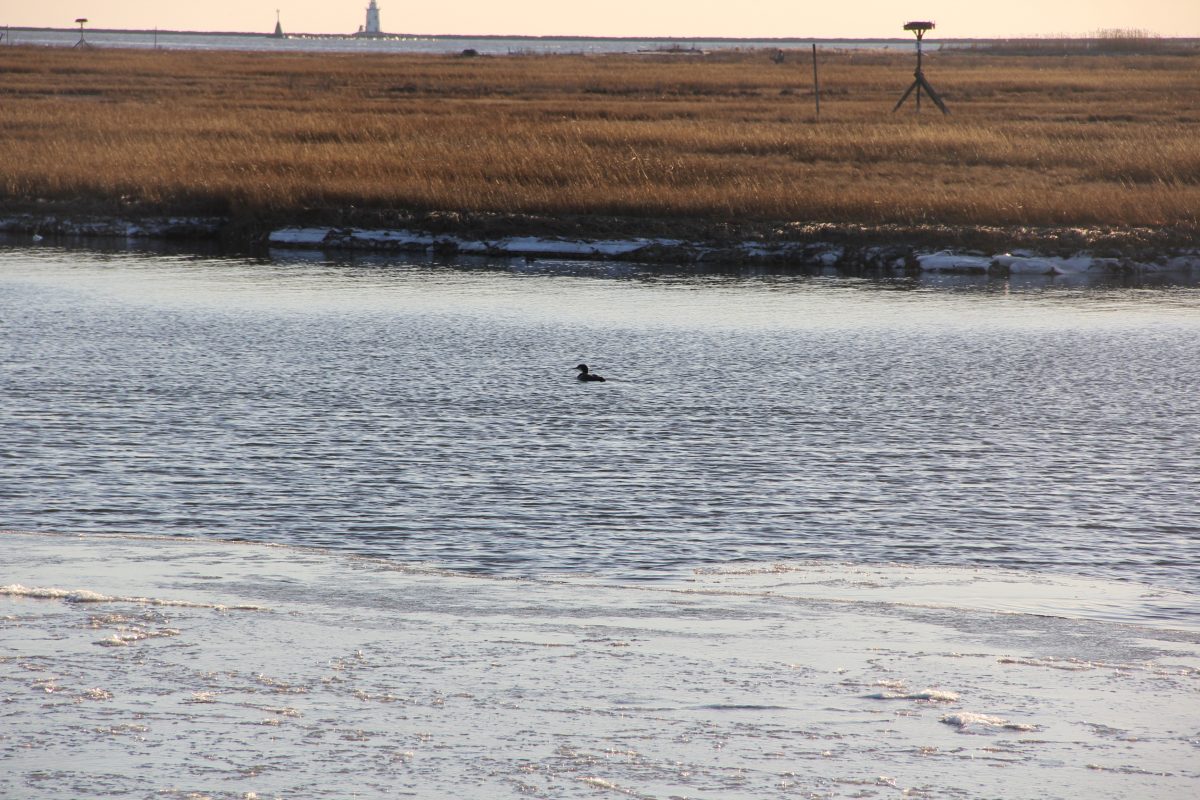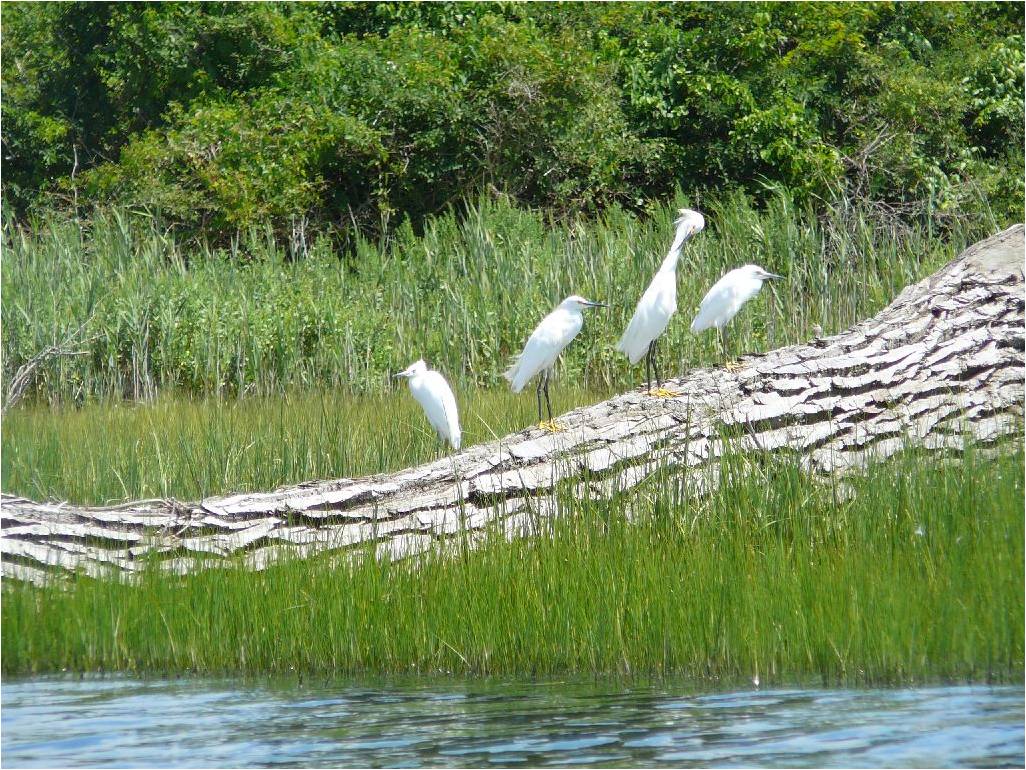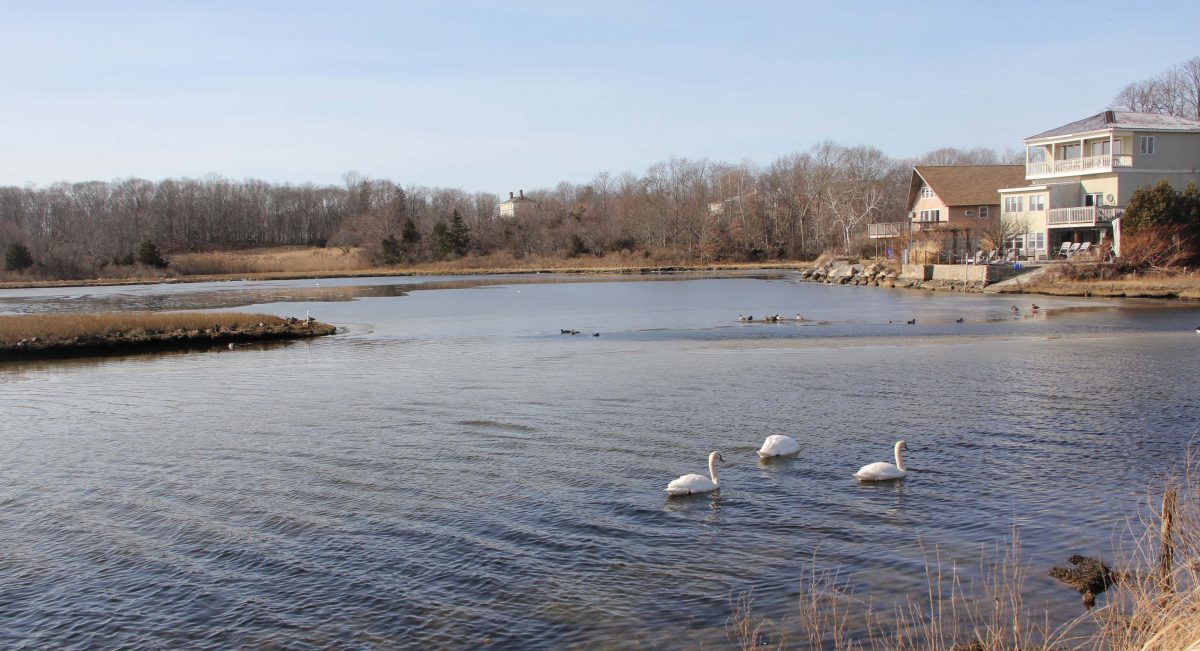
While most people associate Feb. 2 with Groundhog Day, Connecticut Sea Grant and the Roger Tory Peterson Estuary Center in Old Lyme are calling attention to a different reason for marking the day.
World Wetlands Day, started by the Ramsar Convention in 1997 to raise awareness about the value of wetlands worldwide, this year places special focus on urban wetlands as vital parts of cities that can reduce flooding, improve air quality, filter waste, improve water quality and provide a source of income and recreation for residents. For the estuary center, the newest part of the Connecticut Audubon Society’s statewide network, this year’s theme is especially relevant to one of its major education initiatives.
Eleanor Robinson, director of the estuary center, said that an
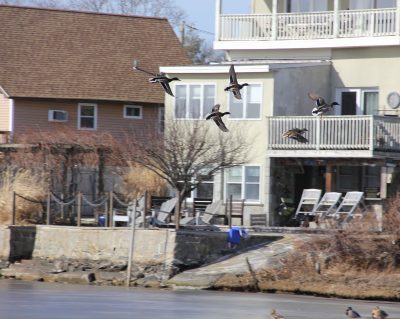
environmental science program for students at Harbor School in New London focuses on salt and fresh-water wetlands around the city, including Alewife Cove at Ocean Beach Park, waterways at Mitchell Woods and the Connecticut College Arboretum, and Greens Harbor Beach on the Thames River. The two-year-old program was funded with grants from the Community Foundation of Eastern Connecticut and the Chester Kitchings Family Foundation, and is slated to continue for at least two more years provided grant funds are renewed, she said.
“We’re continuing to explore New London and find accessible wetlands” to use in field lessons for pre-K through sixth-graders at the school, she said.
In addition to the program in New London, the estuary center also provides environmental education programs for adults and school groups in the towns on the lower Connecticut River. Recognizing the freshwater, brackish and salt marshes from Haddam to the mouth of the river in Old Lyme and Old Saybrook as a unique “bioregion” was the organizing purpose behind the formation of the estuary center, which opened an office in Old Lyme in 2016.
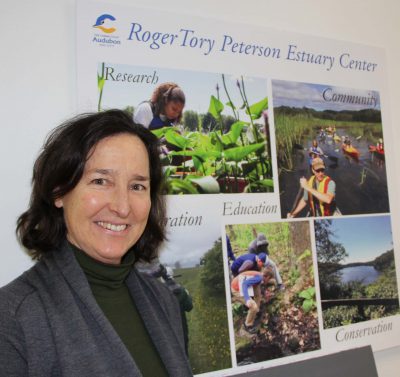
“We’re here to protect it, advocate for it, conduct education about it, facilitate research about it,” Robinson said.
Three years before the first World Wetlands Day observance, the Ramsar Convention recognized the lower Connecticut River marshes as “wetlands of international importance,” one of 1,822 sites worldwide with that designation. The area is now one of four sites in Connecticut being considered for nomination as a National Estuarine Research Reserve. The NERR project is being led by the state Department of Energy and Environmental Protection, in coordination with the University of Connecticut and Connecticut Sea Grant, which celebrates its 30th anniversary this year. Other sites under consideration include Barn Island in Stonington, and sites in the western and central portions of Long Island Sound.
The Connecticut site chosen would join a national system of 29 reserves designated for research, monitoring, education and increased protection. The NERR program is run as a partnership of the National Oceanic and Atmospheric Administration and the states.
Whether the lower Connecticut River is ultimately chosen by the NERR process, the area has already earned several other designations because of its unique ecological features. A CD-Rom produced by Connecticut Sea Grant, “Connecticut River Tidal Marshes: Wetlands of International Importance under the Ramsar Convention,” describes the geology, hydrology, plant and animal life and other features that account for these designations. It is available to educators by clicking here.
Robinson said World Wetlands Day provides an opportunity to highlight both the importance of protecting the wetlands of the Connecticut River and other areas as well as the threats they are facing.
“We have to be even more vigilant now against habitat loss, with sea level rise and storm surge,” she said. “These areas are also important to prevent flooding in our communities, so that when the water does rise, there’s a sponge for it to go to.”
On World Wetlands Day, she added, “I want people to appreciate and hold up wetlands as an essential biological system, and take a moment and pause to appreciate them.”
— Judy Benson
